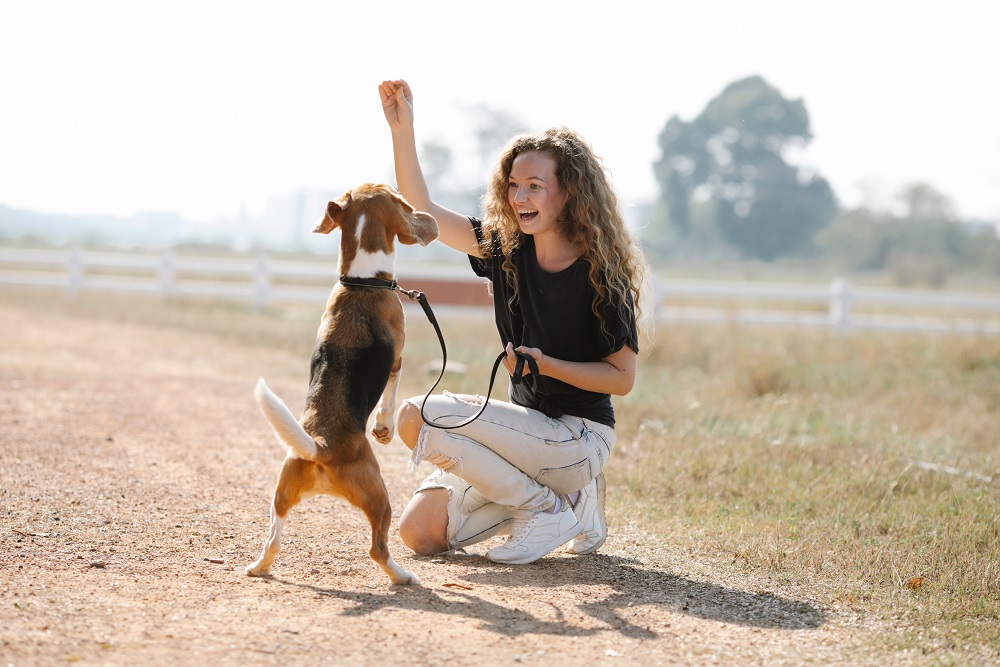Are you tired of your furry friend not listening to your commands? Do you want to teach them new tricks but don’t know where to start? Worry no more! Pet training can be a daunting task, but with the right guidance and techniques, it can become a fun and rewarding experience for both you and your pet. In this blog post, we’ll cover the dos and don’ts of teaching your furry companion new tricks. So grab some treats, a positive attitude, and let’s get started on transforming your pet into an obedient superstar!
Introduction: The Benefits of Training Your Pet
As a pet owner, you may be wondering if it’s really worth your time and effort to train your furry friend. After all, they seem to be doing just fine without any formal training, right?
Wrong! Pets of all ages can benefit from training, and it can be a fun bonding experience for you and your pet. Training can help your pet learn new tricks, manners, and behaviors that will make their life (and yours!) much easier.
Here are just a few of the benefits of training your pet:
1. A well-trained pet is a happier pet. Dogs and cats who know basic commands like “sit,” “stay,” “come,” and “down” are less likely to feel anxious or stressed in situations where they would otherwise feel overwhelmed.
2. A trained pet is a safer pet. Pets who have been taught basic obedience skills are less likely to get into accidents or run away when confronted with a stressful situation.
3. Training can help strengthen the bond between you and your pet. The time you spend training together is quality time that can help improve your relationship with each other.
4. Training can provide mental stimulation for your pet. Boredom is often the root cause of bad behavior in pets, so giving them something to do (like learning new tricks) can help keep them out of trouble.
5. Training can be used as a form of exercise for your pet.
The Dos of Pet Training
When it comes to training your pet, there are a few key things to keep in mind in order to set your pet up for success. First, start with simple commands that your pet can easily learn and build up from there. Secondly, be consistent with your commands and only use positive reinforcement methods such as treats or praise – never punish your pet for making mistakes. Finally, make sure to keep sessions short and sweet so as not to overwhelm your furry friend. following these simple tips will help you successfully train your pet in no time!
The Don’ts of Pet Training
- Don’t use physical punishment when training your pet. This includes slapping, hitting, kicking, or otherwise causing them pain. Not only is this cruel, it’s also ineffective. Pets will often become scared of their owners if they’re physically punished, which makes training more difficult.
2. Don’t shout at your pet or use aggressive language when training them. This can scare them and make them less likely to respond to you. Instead, try using a calm voice and positive reinforcement (praise, treats, etc.) to encourage good behavior.
3. Don’t neglect to train your pet simply because you don’t have time or patience for it. Training takes effort and consistency, but it’s important for both you and your pet’s wellbeing. If you’re not able to commit to regular training sessions, consider hiring a professional trainer or enrolling your pet in an obedience class.
Choosing the Right Trainer for Your Pet
When it comes to choosing a pet trainer, there are a few important factors to keep in mind. First, you’ll want to make sure that the trainer has experience working with animals. Secondly, you’ll want to find a trainer who uses positive reinforcement methods, as these have been shown to be most effective in animal training. Finally, you’ll want to choose a trainer who is reputable and who comes highly recommended by others. With these factors in mind, you should be able to find a pet trainer who is right for you and your pet.
Different Methods of Pet Training

There are a number of different methods that can be used to train your pet, and it is important to find the one that works best for both you and your pet. Here are some of the most popular methods of pet training:
1. Clicker Training: Clicker training is a positive reinforcement method that uses a clicker to signal to your pet that they have done something correct. Once your pet associates the clicker with positive reinforcement, they will be more likely to repeat the behaviors that are associated with the clicker.
2. Rewards-Based Training: Rewards-based training is another popular method of pet training that uses positive reinforcement to encourage desired behaviors. With this method, you will provide your pet with a treat or other type of reward when they display the desired behavior.
3. Punishment-Based Training: Punishment-based training is a controversial method of pet training that involves using negative reinforcement to discourage undesired behaviors. This method should only be used by experienced trainers, as it can be difficult to correctly apply punishment without causing undue stress or anxiety in your pet.
4. Operant Conditioning: Operant conditioning is a type of learning that occurs as a consequence of the consequences of a behavior. With operant conditioning, you can either reinforce desired behaviors (positive reinforcement) or punish undesired behaviors (negative reinforcement).
5. Classical Conditioning: Classical conditioning is another type of learning that occurs when two stimuli are paired together.
Conclusion
Pets are incredibly smart creatures and can be taught a variety of tricks with the right patience and guidance. We hope this article has provided you with some insight into how to properly train your pet new behaviors and commands, as well as what mistakes to avoid when teaching them these skills. With the right attitude and approach, you can have your pet performing all sorts of amazing tricks in no time!








